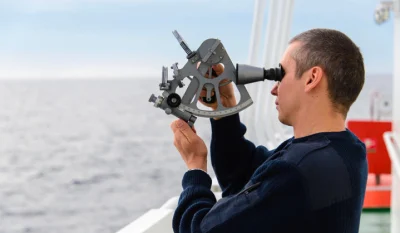A sceptical sector
There can be no doubt that the recent amendments to MARPOL Annex VI represented a huge shift in the way the maritime industry approaches decarbonisation. So what do these requirements mean for an industry grappling with its mandate to reduce emissions?
On January 1, 2023, new requirements for EEXI and CII came into force, marking a significant step in the maritime industry’s journey to decarbonisation. In simple terms, these regulations require that calculations for energy efficiency and carbon intensity are performed for all ships that fall under their scope so that they can be meticulously and measurably improved in line with emissions targets for 2030 and 2050.
These new requirements represent an important stride towards the International Maritime Organization’s (IMO) goal of decreasing annual greenhouse gas emissions by 50% from international shipping by 2050, compared with 2008 levels.
Overcoming the doubts
In general, however, shipping is becoming more and more comfortable with digital solutions. The introduction of chart plotters in the 90’s marked the first real move towards digital technology, enabled by the widespread adoption of GPS in the 80’s. ECDIS standards were later introduced in 1995, and since then, digital solutions have delivered benefit after benefit to the industry. Today’s advanced monitoring and information systems have been made possible by digitalisation, and they continue to make shipping safer, more efficient, and increasingly cost-effective. Such value-adding benefits are proving a major driver for overcoming any remaining doubts regarding this technology.
Initially, there was a wariness of the reliability of digital technology used aboard, mainly due to a fear of blackouts, and concerns about the accuracy of data. In terms of training for deck officers, there remains a persistent attitude of keeping one eye over your shoulder, to ensure that traditional mariner skillsets could be called upon in case digital technology fails while out at sea. Morse code was only recently dropped from the curricula of most maritime academies and all junior officers are still trained to use a sextant and do manual position fix calculations from star sights.

Assessing the Benefits
Of course, training is required for seafarers to understand and stay up to date on the latest digital technology and solutions available. This is a given and is true for any change to the way ships are operated or controlled. But let’s look at where digitalisation has a really positive impact on both shoreside teams and shipboard crew.
We could start with voyage planning. Determining the best route for getting your vessels to their destinations as quickly, safely, and as cost-effectively as possible can be a complex and time-consuming task. So many variables need to be assessed: the weather, tides, the environmental regulations likely to be encountered, port requirements, any NavArea warnings or alerts issued, the scheduling requirements and, of course, the anticipated fuel costs.
Digital solutions, such as OneOcean’s PassageManager for example, can handle all these tasks in a matter of minutes. This greatly eases the workload. But more than that, the technology ensures that the route selected is the best one possible, from all points of view, including cost, safety and compliance. The system also provides data to enhance decision-making, allowing mariners to better react to unexpected situations, a sudden storm for instance, to offer the best alternative route. In other words, the decision-making for the crew is made far, far easier.
In general, the ability to view and analyse data in context is a tremendous help to ship crew. A prime example is the way this assists with record book entries. Paper record books come in different formats and are used to store all kinds of information regarding a ship’s operations. Completing these records and keeping them continually up to date is a task that requires time and care. If information is missing, the Port State Control inspection of the ship is likely to fail, with all the resultant delays, fines and extra work being the unfortunate outcome.
Digital solutions, on the other hand, can help ensure that record book entries are completed with accuracy and ease. The entries are standardised and completed in a consistent format. The risk of accidental omissions and errors is almost removed, and life becomes that much easier for the crew who spend less time filling in paperwork.
A similar situation exists with the extensive documentation needed for safety management system (SMS) compliance. Handling all this paperwork manually and making sure the data is entered correctly is a demanding task. How much easier it is to have a digital solution taking care of all ship-to-shore document exchange and administration. The crew can concentrate on operational priorities instead.
The same is true for staying abreast of the myriad of global, regional and local rules and regulations. The regulatory seascape is increasingly becoming a jigsaw puzzle of local and international environmental regulations. Often, the crew does not have access to countries’ baseline information or may find it onerous to locate national regulations, which makes it easy to fall afoul of them and be subject to fines, detentions or even prison time.
To stay compliant at all times, decision makers aboard need to know precisely what the regulations are, and when and where they apply. An advanced digital solution, such as OneOcean’s EnviroManager and Regs4ships, can provide this information, reducing the risk of costly mistakes being made.
All industries should strive towards progress and the maritime industry is no exception. If commercial maritime operators want to continue sailing towards greater efficiencies, increased environmental sustainability and lower operating costs, digital technology must be part of the equation.

